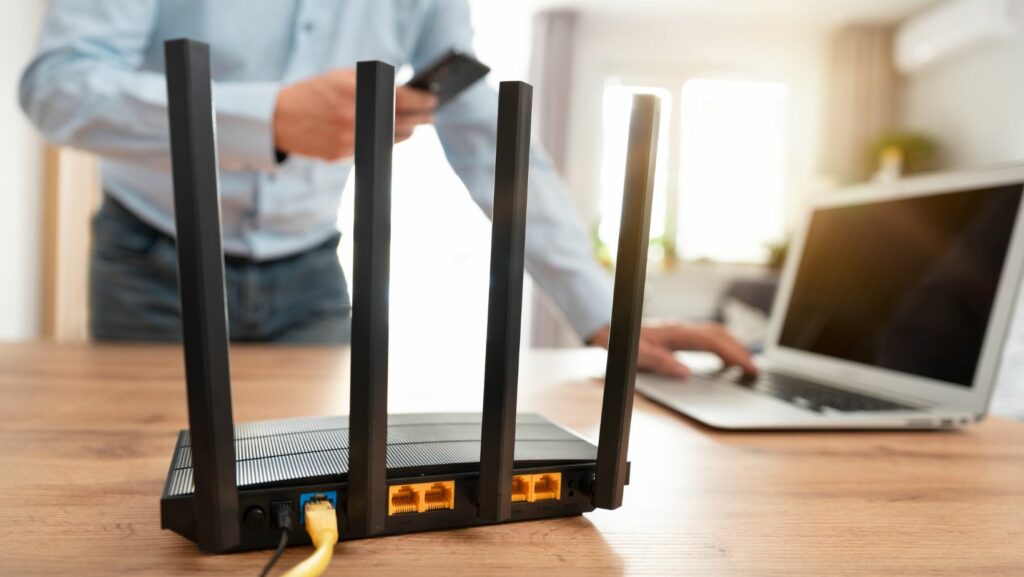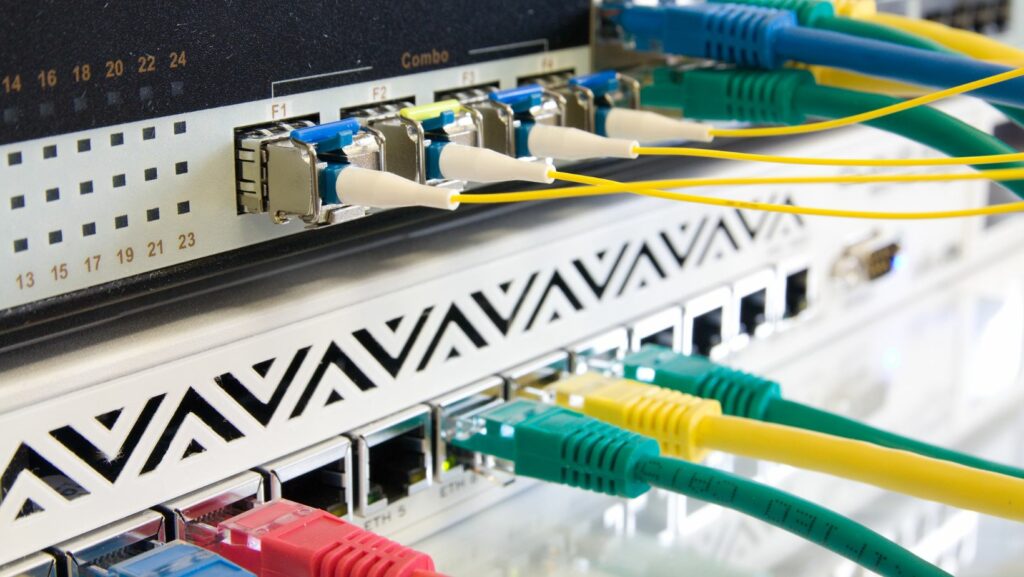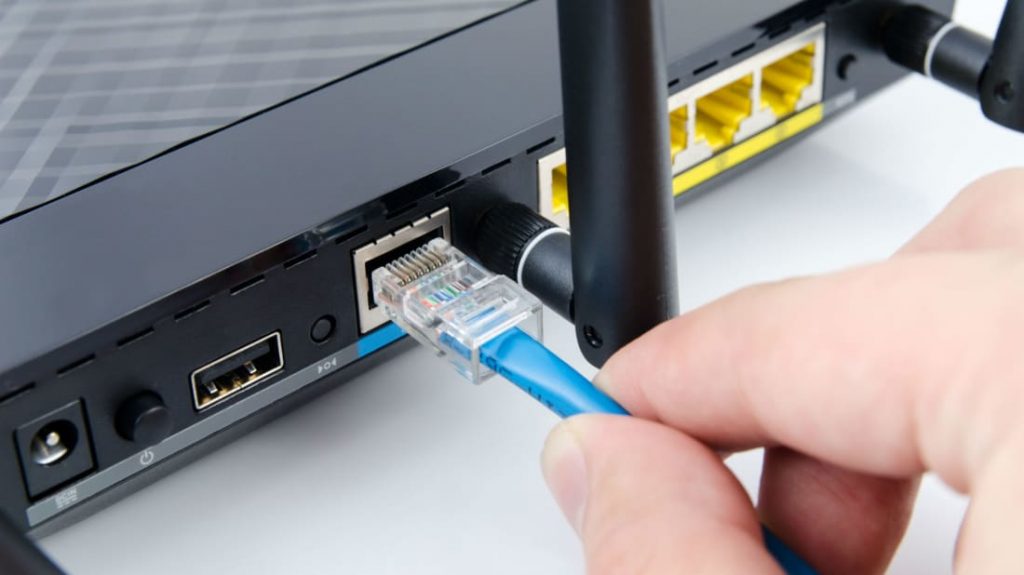The internet is increasingly becoming a basic need for most people. It facilitates various purposes, including working remotely, streaming your favorite shows, gaming, accessing social media sites, or even online shopping.
A fast internet connection allows you to do all these and more. You should not settle for slow cable internet or DSL connection when you can have a fast, stable, and reliable connection at a cost-effective price. AT&T fiber internet gives ultra-fast, nearly symmetrical gig speeds, 99% guaranteed reliability at a reasonable price.
AT&T offers a complete package that is delivered and installed by a technician. If you have a third-party router, you can use it with AT&T fiber.
Related: How to fix slow internet

Should You Use Your Own Router with AT&T Fiber?
There are various reasons why you would need to use your own router with AT&T fiber.
First, when you choose between two routers, you will naturally opt for the one that caters to your needs best, which may include faster speeds, strong parental controls, greater coverage, and even a tri-band connection.
An AT&T router will not have all the features you will want to have, so why not use your own? Although it does not permit the sole reliance on third-party routers, you can utilize your own router. However, you have to configure the AT&T router to a different router.
Although AT&T offers affordable benefit plans, it does not provide flexible router prices; they are a bit costly, and they have generic features. Furthermore, their routers do not have parental controls. You can easily get a more affordable third-party router with more features.
How to Use Your Own Router with AT&T Fiber
Here is a step-by-step guide on how to use your own router with AT&T fiber:
1. Pick a Router
Before you even consider using a third-party router with AT&T Fiber, you must have an AT&T fiber-compatible router. Ensure that it contains your must-have features to ensure that you get a superior connection.
2. Find Gateway Login Information
Once you have your router and ready to proceed, the next step is setting it up. Start by locating the login information, which consists of a password and username offered when you signed up for AT&T Fiber. The data is crucial because it provides the only means of accessing the gateway settings and setting up a third-party router.
3. Log In
Open up an internet browser on your laptop, PC, smartphone, or tablet, then type 12.168.1.254. This is your AT&T settings or configuration’s IP Address. You must make sure the appropriate LED indicators are blinking before logging in, and your computer is connected to the AT&T gateway through the WiFi or a LAN network.
4. Change the Settings
Entering the IP Address takes you to the gateway, where you will need to find the settings tab, then LAN>DHCP. Set and cache the range to 172.16.0.0. Your internet should automatically go off.
5. Plug in the Router
Plug the router into the AT&T devices and a power source. Disconnect the network cable from your desktop or laptop, then plug it in once more.

6. Go Back to Settings
At this point, switch back to the gateway setting, then to the firewall section, and select applications, pinholes, and DMZ. You will then see the new router’s details on the PC or laptop screen. Choose this router and tap on the “allow all applications” options (DMZ Modes).
7. Plug In the Router to Your PC/Computer
Plug in the computer you are using into the third-party router, then log into the router’s configuration page. The router’s IP Address depends on the brand. However, 192.168.1.1 is commonly used. It is essential to double-check the information provided by the manufacture to be sure you have the correct address.
8. Configuration
On the configuration page, you will notice your public IP address. If it is 172.16, then you did not configure the router properly. In this case, you will have to track back your steps to check if you missed something or made a mistake.
Related: Is the Modem Router combo worth it?
9. Disable the AT&T Router
You do not require two routers running simultaneously and messing your settings. So, disable the company-issued AT&T router. You can do so by:
- Accessing the settings option on the gateway
- Selecting the LAN>WiFi option
- Scrolling down to the WiFi interface and making sure it is disabled
- If you own a dual-band router, ensure you disable both before using the internet
Related: How to Set Up Wi-Fi Without a Router
10. Configuring an AT&T Router
You will need to do Bridge Mode configuration in order to use the AT&T router with a third-party router. It enables you to connect two routers to a single network without facing performance issues and IP conflict.
Bridge Mode Configuration disables a modem’s Network Address Translation (NAT) feature and prevents IP Address conflict by letting the router work as a DHCP server. NAT involves rewriting the IP packet’s destination and/or source while they go through the router.
The modem must be bridged before connecting it to a router because applications, such as remote management, P2P, and VPN, need a public IP Address on the WAN port of the router for a successful connection.
It is vital to note that you cannot use the Bridge mode to its full potential through an AT&T gateway. While alternatives such as IP passthrough can deliver decent configuration, this mode may deny you the firewall protection offered by AT&T fiber, thus rendering your laptop or desktop susceptible to system breaches.
You can perform configuration in different ways based on the model of the AT&T modem/router. They are Motorola NVG 510 or 589 and 2Wire/Pace device. Your device has to be connected directly to the gateway and the IP address acquired via DHCP to configure the 2Wire/Pace gateway.
Configuration of the Motorola NVG 589 and 510 is achieved through DHCPS-dynamic, DHCPS-fixed, or manually.
Conclusion
Using your own router with AT&T is a reasonable choice because it gives you more control over the budget and your network, better coverage, and faster speeds. However, remember that once you introduce a third-party router, you cannot receive service assistance from AT&T. Instead, you will seek help from your router’s manufacture.
Related: How to Enable 5GHz on Windows 10

